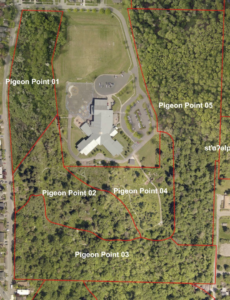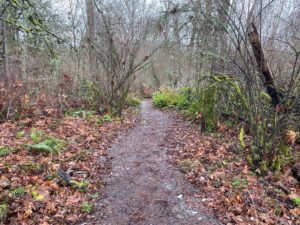New Frontiers at Pigeon Point Park
We’ve been working hard at our restoration of Pigeon Point Park and this year we are excited to announce that we’re expanding into a new section of the park: Pigeon Point 03! This zone is located at the south end of the park, and may be best known for its many meandering walking and running trails.
Much of Pigeon Point 03 has not yet been touched by present-day restoration efforts and is still disturbed following logging during the last century. It is a secondary forest, which is any forest recovering from natural or human disturbance. Secondary forests are still very valuable in preventing soil erosion and maintaining biodiversity — Pigeon Point 03 supports a wide range of animal species including hawks, foxes, and Red-legged frogs.
However, like many secondary forests it lacks in diversity of species and the tree canopy cover found in primary forests. This leads to highly fluctuating soil and air temperatures, which often selects for those able to survive in harsher conditions. It is in these areas that invasive species, species not originally in the ecosystem, often outcompete the native species. This can happen for several reasons. Many invasive species have fast growth rates, high seed dispersal ability, and a wide range of climates they can tolerate. This leads them to taking over an area, shading out and restricting the growth of the native species. This severely limits biodiversity and the health of the forest. In a recent survey trip through our new territory, we found numerous invasive species, including blackberry, Scotch broom, cherry laurel, holly, and ivy.
Throughout the years, we at DNDA, have been active in many sections of this park. At present, much of Pigeon Point 03 is in Phase 1 of the Green Seattle Partnership’s four-phase approach to determine the long-term health of a site. This means in the short term, our primary focus will be removal of invasive species. We remove invasive species that compete with native species for resources like soil nutrients and sunlight. Once we create enough space, we reintroduce native species that will help with long term forest health and biodiversity. A healthy forest filters air and water more efficiently leading to a healthier environment for us!
If you would like to learn more about the greenspaces around you just let us know! If any of this has inspired you, come join us. We host volunteer events every Tuesday and Saturday!
Written by Tyler Yeomans, DNDA Environmental Outreach Specialist



